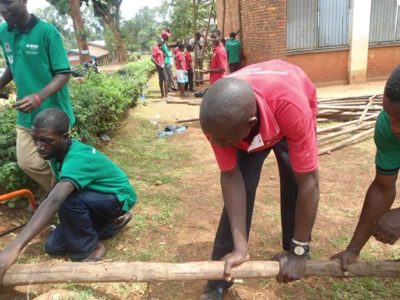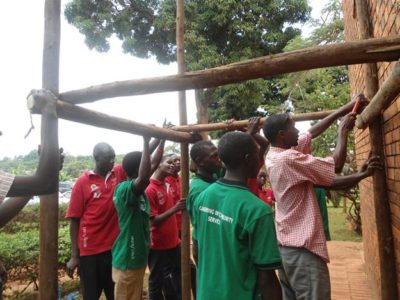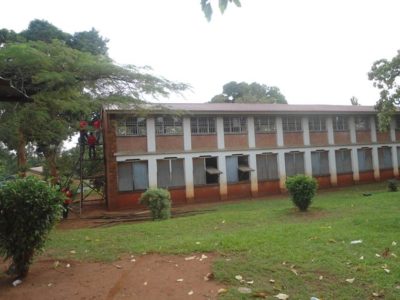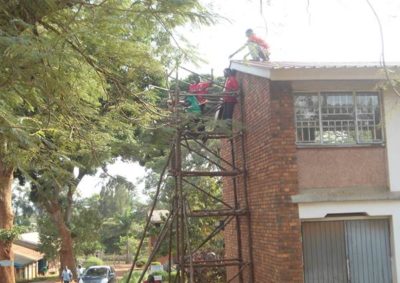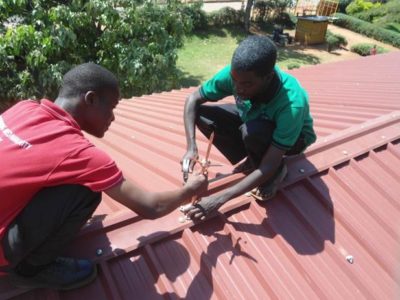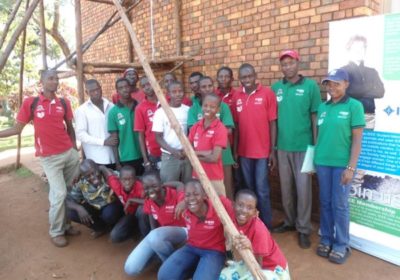 LOCATION: Kampala, Uganda
LOCATION: Kampala, Uganda
PROJECT LAUNCHED: 2014
PROJECT LEADS: Kyambogo University
PROJECT OVERVIEW & UPDATES
When the rain started that afternoon at the Runyanya Primary school in rural western Uganda, it was time to go home. Instead, the children watched through classroom windows as the tropical downpour turned the dirt roads into muddy rivers. That was when lightning struck the school, killing 20 of the youngsters and injuring almost 100 more.
Sadly, this is not a rare occurrence in Uganda. Located on the Equator in Central Africa, the nation has one of the highest rates of lightning strike deaths in the world. Kampala, the capital, has an average of 280 thunderstorms a year. Moreover, meteorologists think that climate change is affecting extreme weather conditions – increasing the likelihood of even more lightning strikes.
In Kampala, engineering students at Kyambogo University realized the critical need to develop, produce and install lightning arresters – a proven method to reduce lightning strikes – in Ugandan schools and other buildings. LOG’EL PROJECT, a local non-profit organization that encourages talented technologists – young people, especially – to prosper through innovation, joined with the university students and agreed to help coordinate the project.
The five undergraduate students at Kyambogo University and the non-profit’s leaders saw the endeavor as an ideal opportunity to provide high-school and primary-grade students with hands-on exposure to how engineers apply their skills to solve real-life community problems – and at the same time, stimulate students’ interest in STEM knowledge and future careers.
Eight students at Kyambogo College (High) School and five pupils at Kiswa Primary School in suburban Kampala were recruited to work on the lightning arresters, with special attention given to including girls. Then the work began, with the university students mentoring and supervising the younger pupils.
Using the laboratory facilities at Kyambogo University, the five engineering undergraduates worked with the high school students to show them how to interpret lightning protection drawings. The university and high school groups also worked together to design, develop, install and test grounding systems. The pupils at the primary school, which was also the site of the first lightning arrester installation, learned from the engineering students about lightning and grounding systems, and the youngsters later helped with the on-site development plan and installation.
How successful was the lightning arrester project? First, and most importantly, with the lightning arrester now functioning, Kiswa Primary School and its young students are now much less likely to be struck by lightning. School and community leaders support this initiative to protect young lives; a second grounding system enabled by the grant has since been installed at a special-needs school in Kampala.
But the success of any EPICS in IEEE project is also measured by how much the students involved in it gain a greater appreciation for the value of engineering and how engineers serve humanity. The lightning arrester project clearly demonstrated a significant leap, with comments such as this one from a high school student who participated: “I am amazed and thrilled to see scientific knowledge transferred from books to solutions that protect life.”
Adds a Kiswa science teacher, “We had just been pumping our pupils with science knowledge so they could pass exams. Now, I understand the value of exposing them to science solutions so the students appreciate the importance of becoming problem-solvers.”
PROJECT PARTNERS
- Kyambogo University
- LOG’EL PROJECT
- Kyambogo College (High) School
- Kiswa Primary School

